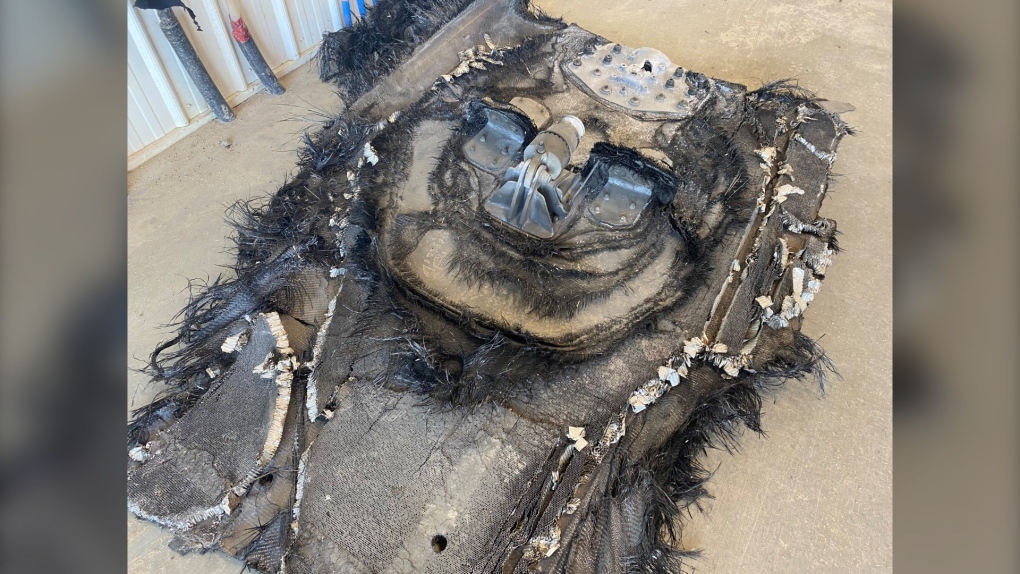In recent months, several pieces of space debris have fallen from the sky and landed on Earth, causing confusion and concern among those who discovered them. Two such incidents occurred in Saskatchewan, Canada, where farmers Barry Sawchuk and Cody Sawchuk found strange objects in their fields.
The first incident happened to Barry Sawchuk in late April 2023 when he came across a burned-up piece of carbon fiber composite and aluminum honeycomb that weighed around 100 pounds. The object, which was believed to be part of a satellite or spacecraft insulation, had fallen during re-entry.
A few weeks later, Cody Sawchuk and his family discovered similar objects on their land. These pieces were smaller but still significant in size and weight.
Chris Rutkowski, a science writer from the University of Manitoba, shared that a similar incident had occurred in Wollesten Lake in 1968 involving Canada's own Alouette satellite and its thermal blanket insulation. The Australian Space Agency also investigated a three-meter piece of debris found on an Australian sheep farm, which was believed to be part of a SpaceX rocket.
The question then arises: who is responsible when space junk falls from the sky and causes damage or harm? According to international agreements under the Outer Space Treaty, the country responsible for launching the object is liable for any damages caused by it on Earth.
SpaceX, which has a constellation of over 5,000 satellites in orbit, has been identified as a possible source of these debris incidents. The trunk sections of their spacecrafts do not burn up as expected during re-entry and can cause harm if they land on populated areas.
The Transportation Safety Board of Canada is currently investigating the incidents to determine the exact cause and origin of the debris. In the meantime, farmers like Barry Sawchuk are left wondering what other surprises might fall from the sky.




